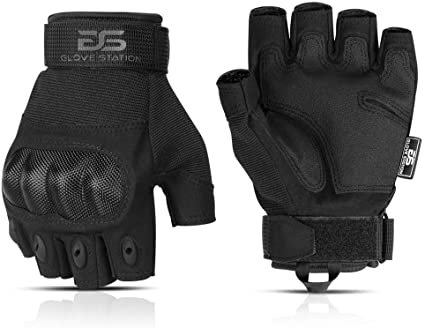Camping is a year-round activity that demands the right tools depending on the season. Spending time in nature is rewarding, but cold nights and unpredictable weather can make it downright unbearable.
Bringing along a tent heater for camping is a game-changer for many. Gone will be the nights of sleeping in 5 layers of clothes, heavy-duty jackets, and thermal rated sleeping bags.
With less cranky mornings, you will be able to change in your tent without freezing your baguettes off. The trick with tent heaters is to have something that is portable, keeps you warm, and won’t be a fire hazard while you are asleep.
Table could not be displayed.
With electric heaters, and gas heaters, you have a range of options to choose from that, with the proper safety precautions, will keep your tent warm year-round. Let’s jump straight into our top 10 best performing models on the market
Page Contents:
10 Safest Tent Heaters for Camping Reviewed
1. Mr. Heater MH18B, Portable Propane Heater
The Big Buddy is the best-selling portable propane heater on the market, and with good reason. With a controllable output ranging between 4,000 and 18,000 BTU’s of heat, it safely provides hours of warmth from two, 1-liter canisters.
Depending on what you set the output level to, you can get between 5-10 hours of use with the canisters, but a large propane tank can also fuel the unit using an adapter hose (not included). Small enough for storage at 18.5 x 18 x 11.4 inches, it is designed with a carrying handle for easy transport.
It can be used in or outdoors, with an automatic shut-off safety feature if accidentally knocked over. A fan inside the unit runs on 4 “D” batteries or a separately purchased AC/DC adapter, helping distribute heat for increased warmth. Though gas-powered, the Big Buddy is easy to turn on using the convenient piezoelectric knob to spark the unit, and then dialing in your ideal output setting.
Campers and backpackers in higher altitudes should know that it cannot be used anywhere that is over 7000 ft above sea level, as a safety sensor will turn off the unit if the oxygen levels are too low.
Key Features
- Best-Selling Propane Heater With 18,000 BTU’s
- Portable and Affordable Price Tag
- Automatic Shut Off Safety Features
2. Corporation Degree Tank Top
Compact and easy to use, this little guy is basically an element that attaches to the top of a large propane tank to provide heat. With between 29,000 to 45,000 BTU’s, the low setting puts out a tremendous amount of heat in a short time, and you can adjust it to medium or high if need be.
Attachment to the tank is straightforward, with a push-button starter dispersing gas into the element, which is then sparked with a BBQ lighter and temperature-adjusted for comfort. Depending on your output level and usage time, you should get an average of around 10 hours of use with a 20lb. tank.
The dome-shaped element gives you full 360-degree heating with 180 degrees of directional control, is well-constructed, and housed in a metal cage to avoid accidental damage to the burner or anything that it may come in contact with.
This heater does produce carbon monoxide and is intended for outdoor use, so not the best for keeping warm inside a tent, however an oxygen depletion sensor will trigger an automatic shutdown of the unit if you decide to use it indoors and there is insufficient ventilation. Additionally, tipping the heater over will also cause an auto shut off feature to be triggered.
Key Features
- Excellent Price and Build Quality
- 360 Degree Propane Heater with 180 Degree Directional Control
- 45,000 BTU’s Guarantees Lots of Heat
3. Martin Portable Gas Catalytic Heater
CSA certified and portable enough to take anywhere, this foldable tent heater offers exceptional performance without breaking the bank. Simple to turn on with the electronic push-button sparker, it will take a bit of time for the chemical reaction to heat up the element in cold temperatures, but once it gets going it gives you a lot of warmth.
Using propane canisters, you get about 7 hours of use from a 1lb. can, which attaches to the heater via threading. The heater can be propped up at a 45-degree angle using the connected legs. Allowing you to aim up to 3000 BTU’s of heat toward your hands or feet.
With catalytic technology, you get 99% efficient heat distribution from a flameless source, and very little carbon monoxide emissions, although it is always advisable to have proper ventilation when using a catalytic tent heater. There is also an adjustable knob that will output low or high amounts of heat depending on the size of your space.
Safety-wise, the ceramic element is covered with a grill so you don’t accidentally come in contact with it, and the heater will shut off if you tip it over, or if the flame goes out, saving you from inhaling propane gas.
Key Features
- Catalytic Propane Heater Uses Less Gas to Save You Money
- Portable Tent Heater for Campers and Backpackers
- Flameless and CSA Certified for High Safety Rating
4. Mr. Heater Little Buddy Safe Propane Heater
Packing a mighty punch in a small package, the Little Buddy’s portable design stands only 18 inches tall, and uses 3 easy pieces to generate heat anywhere you go. After attaching the 1-liter propane canister to the 45-degree angled heater, it simply slides into its base for stability, and a push-button ignition lights up the unit in under 30 seconds.
Rated for outdoor or indoor use (with proper ventilation), this is an excellent tent heater for camping and can give you between 5 and 6 hours of continuous 3800 BTU output. While it is portable enough to attach the heater to a backpack, the oxygen-depletion shut off sensor ensures it is only for use in elevations under 7000 feet.
Tipping the unit at a 45-degree angle will trigger a shut down, saving you from potential injury/harm. Designed for camping, ice fishing, garages and general outdoor use in frigid conditions, this best-seller from Mr Heater is affordable, and will keep you warm year-round.
Key Features
- Great Price for Propane Heater
- Simple to Use Push-Button Ignition
- Includes Vital Safety Features (i.e. Automatic Shut Off, Oxygen Depletion Sensor)
5. Camco Olympian Wave Catalytic Heater
The Wave 3 is a portable catalytic heater that is a convenient addition to any campers or cabins in need of some heat. With a 1600 to 3000 BTU output, it covers a range of 100 square feet and can be used as a floor space heater, or mounted on the wall.
Due to the nature of catalytic technology, it uses no electricity or batteries, and is extremely efficient and economical, using 99% of the heat produced for a low-cost heating option. The Wave 3 uses radiant heat transfer, releasing heat when the rays hit people, floors, and walls (rather than heating the air), for immediate warmth.
Turning on the unit is easy enough as you need only depress the primer button, spark the pilot light with the piezo starter, and adjust the heat level to your liking. With no production of carbon monoxide, it is a very safe option for indoor use, although a propane detector is always a good idea in case there is a leak in the unit.
Durable and long-lasting, the sparker is good for 20,000 starts, a 20lb tank can give you over a month of use, and a metal grill protects the propane infused heating pad from coming in contact with anything flammable.
Key Features
- Long-lasting Catalytic Propane Heater with 20,000 Ignitions
- Catalytic Technology More Economical Than Most Gas and Electric Heaters
- Safe Heater for Indoor Use Putting Out 3000 BTU’s
6. Neiko Emergency Butane Heater
Easy to load, lightweight, and extremely portable, this butane heater is a budget-friendly option designed as an emergency survival tool. With proper ventilation, you can use this as an in-tent heater, as it performs well in small spaces as opposed to large ones.
The butane canisters afford you around 5 hours of use on the low setting, which, depending on where you source your butane, will save you money in the long run over a large electrical bill. The heater head has a slight tilt to it, allowing you directional heat control, and there is a carrying handle as well. The metal frame does heat up though, so be sure to let the unit cool down before you handle it.
The heater also has a second inlet for an external fuel source, and with the right adapter you can hook up a large propane tank to it. This is an important feature to have when camping in low temperatures as butane does not burn once the weather drops below freezing.
A pressure sensing safety feature will shut the unit off, but the heater does not come with a lot of the safety features that other models include, such as oxygen depletion sensors and automatic shut off when knocked over. While it will heat well, it is recommended for those that are more comfortable, and have more experience, using gas heaters.
Key Features
- Small Butane Heater for Emergency Situations
- Low Cost of Butane Saves You Money vs. Electric Heaters
- Can Hook Up to External Fuel Source with Adapter
7. OPOLAR 1500W Ceramic Space Heater
This 11-inch tall ceramic space heater needs an electrical outlet to work, but it’s long-lasting construction and quick-heating design does a great job at warming up small spaces. The unit has a handle for easy carrying and is very quiet at 50 decibels, ensuring you won’t be distracted if you intend to use it while sleeping.
There are 3 output modes: a general fan setting for air circulation, and low (1000W) and high (1500W) heat settings, which are temperature controlled using the adjustable thermostat knob. Once the room reaches its desired level of warmth, the unit will automatically shut off.
Opolar also includes two important safety features, as these types of heaters can run for hours. An overheating protection system will kick in if the internal elements get too hot, and tipping over the heater will also make the unit shut down. This is a great electric tent heater option that won’t break the bank while keeping you toasty.
Key Features
- Small Electric Tent Heater at 11 Inches Tall
- Ceramic Heater Technology Safe for Indoor Use
- Quiet for Sleeping at 50 Decibels
8. 2 in 1 Portable Space Heater
With a dual temperature fan, this 2 in 1 ceramic space heater will be your best friend on cold nights. Requiring a power outlet, this battery-less model has low (750W) and high (1500W) outputs, warming up spaces in mere minutes.
With year-round flexibility, you can use the secondary low (18W) and high (24W) fan settings to keep cool during the summer months, and the less than 10-inch size makes it ideal for use in the smallest of spaces. Equipped with a handy carrying handle on the back of the unit, a fan tilt design of up to 45 degrees gives precise directional control of where you want the heat dispersed, and it is quiet enough that it won’t impede your slumber.
With ETL certification, this is a safe tent heater for camping, and is cool the touch with built-in auto shut off features. Tipping the unit over will cause it to turn off, and it also has an overheat protection shut off, ensuring you can sleep and not worry about a potential fire hazard.
Energy-saving, fast-acting and efficient, this is a great little heater that is affordable and might be exactly what you are looking for.
Key Features
- Extremely Affordable Ceramic Electric Heater
- Dual Fan Output Temperatures for Year-Round Use
- Less Than 10 Inches Tall to Fit Easily into Small Spaces
9. Texsport Portable Outdoor Propane
With an adjustable control knob to emit up to 2,890 BTU’s of infrared heat, this portable propane burner connects to 16 ounce or 14-ounce canisters to eliminate frigid temperatures. The aluminum reflector maximizes heat quality and the stainless-steel burner is enclosed in a metal grid to meet safety standards.
The unit will automatically shut off the propane if your flame goes out, and it also comes with a sturdy base to house the canister which will run for around 7 hours on the low setting, and about 4 hours on medium.
It excels over other models that automatically shut off when oxygen levels are low (making it an attractive option for those camping in higher elevations), and heats small spaces quickly, and large spaces in about 30 minutes.
Lightweight and easy to pack, you can bring this anywhere as it takes up very little space and also comes with a carrying handle.
As with all gas heaters, they are designed for outdoor use, but with the right amount of ventilation you can use it indoors and its portability makes it a great option as a backpacking tent heater. Simple to use, efficient, and budget-friendly, Texsport delivers an excellent tent heater for a reasonable price.
Key Features
- Affordable Propane Heater
- Efficient on Fuel with 7 Hours of Heat from 1 Canister
- No Oxygen Depletion Sensor Means You Can Use This in Higher Elevations
10. Honeywell HHF360V 360-Degree Fan Forced Surround Heater
Honeywell offers a very affordable model that can be used around your home, but would also be an ideal electric tent heater. Small but mighty, it weighs 3 lbs. and stands 11 x 8 x 8, fitting into confined areas easily and distributing up to 1500 watts of heat in a 360-degree array.
2 output settings let you choose between an energy-efficient low mode and a quick-warming high, and an adjustable thermostat control knob gives you precise temperature control at your fingertips. The unit is covered in a plastic housing which is cool to the touch, and if it gets accidentally knocked over, or overheats, a safety protection function will kick in and shut it down.
While the fan isn’t the quietest, it isn’t intrusive enough to be frustrating. You can move this around easily using the handle on the top of the unit, allowing you to bring it camping and use it in many rooms at home during the winter months.
Key Features
- Budget-Friendly Electric Heater
- Simple to Use On/Off and Temperature Control Dial
- Will Automatically Turn Off if Unit Overheats or is Tipped Over
How To Choose A Tent Heater?
There are many features to compare when it comes to tent heaters, and they also work in different ways to produce heat, so let’s break down what you need to consider when you are searching for the best tent heater.
Type of Heater
While all tent heaters do the same job, the technology differs from model to model and can be broken down into two categories – gas heaters vs. electric heaters.
Gas tent heaters
Very popular with campers and can be further broken down by the type of gas they use – propane or butane. Propane gas is readily available, and works well in low-temperature climates. Butane, on the other hand, is less available yet cheaper, but does not combust once the temperature drops below freezing.
The majority of gas heaters are designed to be used with either a 16- or 14-ounce canister of pressurized gas that uses universal threading to hook up easily to the heater.
In some cases, a large propane tank (20/30 lbs.) can be connected with an adapter, giving you longer usage times. The majority of these heaters will have a piezo push-button ignition, making for a quick and easy startup (although some models will require you to manually light them).
One thing you must be aware of when using gas heaters is, they have a propensity for releasing carbon monoxide, so it is imperative that you only use them in a tent that is well ventilated, and adding a carbon monoxide detector to your arsenal is highly recommended.
Catalytic heaters
A type of gas heater that utilizes the chemical reaction of pressurized gas mixing with oxygen to produce a flameless heat. This makes them not only extremely safe, but also more efficient, as they give off radiant heat (heating up the cold air) instead of blowing hot air into space through forced-fan technology.
Electric Heaters
These heaters require electricity to operate, and do a fine job of generating heat. They use fan technology, sucking in cold air, converting it to hot air, and then dispersing it into the room. Having said that, they tend to lack portability, and because they require a power outlet to work it renders them a less attractive option for most campers.
Output / Usage
All heaters will have an adjustable knob that will allow you to control how much warmth the unit is putting out.
Gas heaters will be capable of putting out higher temperature than electric heaters, especially when operating in colder climates. An average of 10,000 BTU’s is quite common, but some heaters can put out much more.
With the 16-ounce canisters, you can usually get anywhere from 4 to 7 hours of use depending on if you set your output level to low or high.
If you have a heater that can be used with a large propane tank, you can a lot more hours of use, but this will all depend on the heater’s BTU output.
The output of electric heaters is measured in watts, with a common range being 750W to 1500W.
Portability
This category really depends on your style of camping. If you are the type that camps at a powered site, you can use a bulkier electric tent heater. If you are backpacking or just roughing it in places without electricity, then gas heaters will be the choice for you, and they offer a bunch of portable designs that make them easy to travel with.
Price
When comparing the price between electric heaters vs. gas heaters, the most wallet-friendly heater will be a catalytic butane gas heater. This is because they use very little gas, while putting out a great deal of heat, and the butane is cheap.
Keep in mind though, butane is harder to source, and doesn’t work in freezing temperatures, so propane would be your next best option. Electric heaters will lead to an expensive utility bill at the end of the month, and any other gas heater will be less efficient (using more gas while putting out less heat) than a catalytic option.
The overall price is dependent on the type of heater, size, and bells and whistles, but you should expect to pay anywhere in the range of $70 – 150 for something decent.
Tent Heater Safety Guide and Tips
Safety is a big concern when you are using heaters, especially during sleep hours. Thankfully, tent heaters on both sides of the technological coin offer excellent safety specs.
Push-button ignitions are a welcome safety feature on most gas heaters. These make it easy to light, and save you from messing around with a flame near a gas source.
As these types of heaters give off varying levels of carbon monoxide, a lot of them include an oxygen depletion sensor, triggering the unit to shut off if there is no proper ventilation.
While this is an excellent feature to have, it makes these models obsolete for those that are backpacking or camping in high altitudes. Additionally, a knocked over unit will also trigger this shut-off feature, as will an extinguished flame, so that gas isn’t filling your tent.
With electric heaters, they will automatically shut off when knocked over, or when they overheat, and some will have a sensor to turn off once the desired temperature is reached.
Here are our top 5 safety tips to keep in mind when operating your tent heater:
- Learn the ins and out of your heater by reading the manual it comes with. While this article offers information, take the recommended operational instructions as canon, and only use the unit as the manufacturer intended.
- Gas heaters can be prone to leaks. After you connect your gas to the heater, check for any leaks by spraying soapy water at the connection point, and on the hose. If you see bubbles, you have a leak. If you do not see bubbles, it is safe to turn the heater on.
- Make sure your heater has an emergency shut off function when the unit is knocked over. Accidents happen, and the last thing you want is your heater to ignite your tent.
- Electric heaters can overheat in small spaces if there is no ventilation. A model with an automatic shut off function will eliminate the potential of your heater catching fire while you are asleep.
- Invest in a carbon monoxide detector if you are using a gas tent heater. These heaters emit carbon monoxide, which, if not properly ventilated, can result in death. Better safe than sorry!
Frequently Asked Questions
What is a Tent Heater?
A tent heater is an electric or gas-powered portable device that generates heat and can be used indoors and outdoors. Purposely created to provide warmth in enclosed areas like tents, storages and small workspaces.
What is the Safest Type of Tent Heater?
If you have power outlets where you are camping, an electric heater is the safest type of heater you can use. With automatic shut off features, it will ensure that the unit is powered off before anything bad might happen.
While gas heaters do have similar safety features, anytime you are sleeping with a combination of gas and heat, as well as the production of carbon monoxide, there is going to be a more risk involved.
How Does a Tent Heater Work?
Gas tent heaters work by using flame and compressed gas to light an element that gives off heat, whereas electric heaters use fan technology, taking in the tent’s cold air, heating it, and then dispersing it.
How Much is a Tent Heater?
Prices vary depending on gas versus electric, physical dimensions, and product specifications, but expect to pay around $100 for a good quality tent heater.
Are Tent Heaters Loud?
Most gas tent heaters will have a slight operational hiss, but for the most part they are very quiet and won’t disrupt you when sleeping. Electric heaters are quiet on low, but can get loud when on the high output setting because they use a fan to distribute heat.
How Long Does a Tent Heater Heat for?
Electric tent heaters will heat for hours at a time, as long as you have continuous power running to the unit. With gas heaters, it depends on how much fuel you have connected to the heater, as well as the BTU output of the heater. The 16-ounce propane canisters usually give you between 4 and 7 hours of use, while a large propane tank can give you anywhere from 10 to 30 hours.
Conclusion
With knowledge of what is currently on the market, you should now have a clearer understanding as to what is the best tent heater for your camping needs. Choosing the right model will keep you warm and safe during the cold months of the year.
Resources and Sources
Useful information on Using Portable Heaters

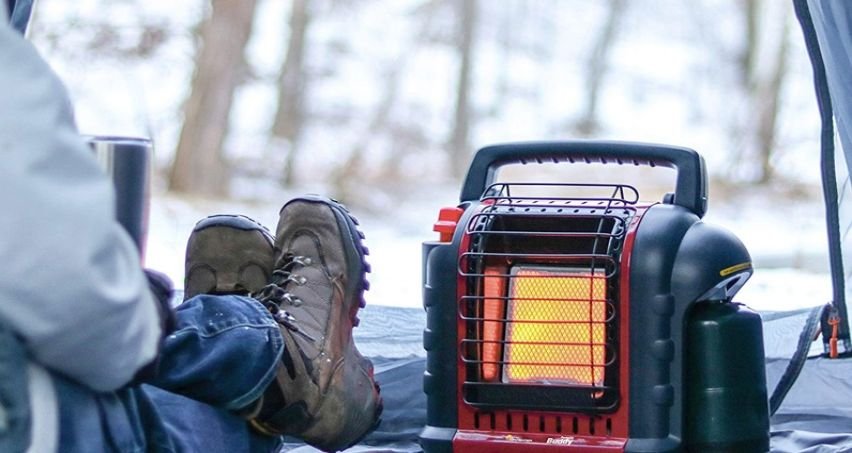
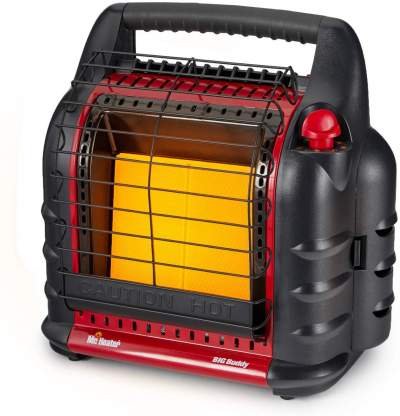
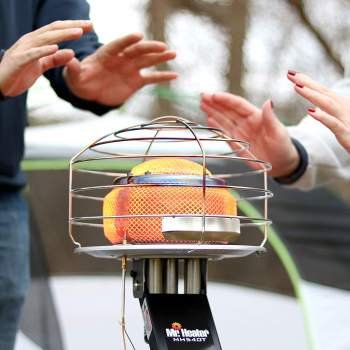


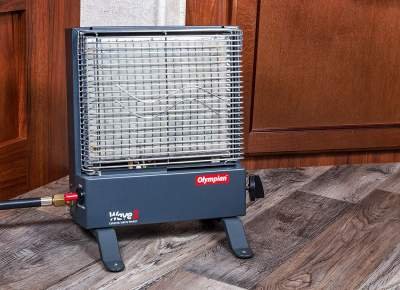
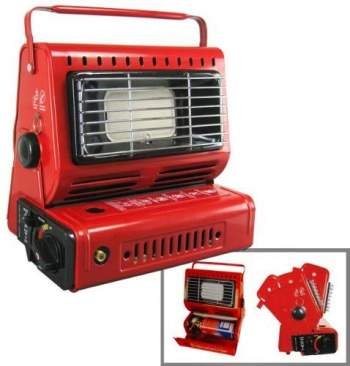
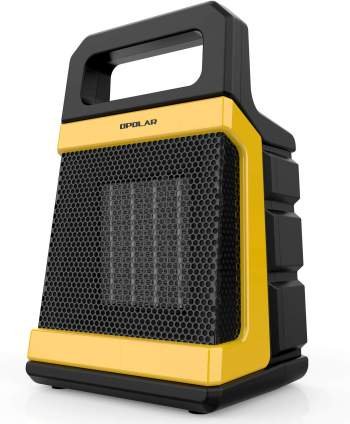

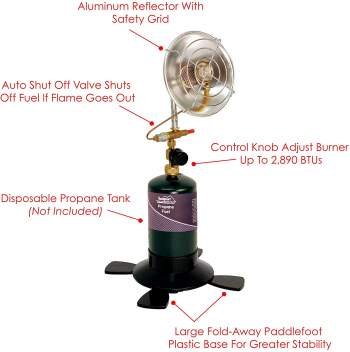
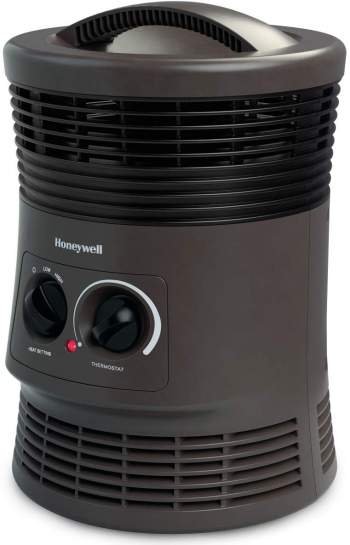
![8 Best Emergency Radios in the USA and worldwide [2021]](https://thetenthub.com/wp-content/uploads/2021/09/tentrr.jpg)
